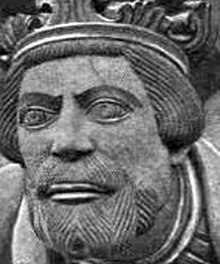HD 40873
HD 40873| 관측 데이터 에폭 J2000 이쿼녹스 J2000 | |
|---|---|
| 별자리 | 오리가 |
| 우측 상승 | 06h 04m 29.11992s[1] |
| 탈위임 | +51° 34′ 24.1921″[1] |
| 겉보기 크기 (V) | 6.45[2] |
| 특성. | |
| 스펙트럼형 | A7 V 또는[3] A7 III[4] |
| U-B색지수 | +0.16[2] |
| B-V색지수 | +0.196±0.007[5] |
| 아스트로메트리 | |
| 방사 속도 (Rv) | 19.6±2.9km[5]/s |
| 고유 운동 (μ) | RA: +1.168mas[1]/yr Dec.: −41.692[1]mas/yr |
| 시차 (π) | 7.1678 ± 0.0962[1] 마스 |
| 거리 | 455 ± 6 리 (140 ± 2 pc) |
| 절대치수 (MV) | 0.76[5] |
| 세부 사항 | |
| 루미도 | 38[6] L☉ |
| 온도 | 7,753[6] K |
| 회전 속도 (v sin i) | 134km[7]/s |
| 기타 지정 | |
| 데이터베이스 참조 | |
| 심바드 | 자료 |
HD 40873은 오리가 북쪽 별자리에 있는 항성으로, 델타 오리가의 남쪽으로 몇 도 떨어져 있다.약 455광년 거리에 위치하고 있으며,[1] 태양의 약 38배 정도의 광도로 빛나고 유효온도는 7,753K이다.[6]변광성이[2] 의심되며 회전 속도가 상당히 빨라 예상 회전 속도가 134km/s이다.[7]에겐(1985)은 하이아데스 슈퍼클러스터의 유력한 멤버라고 제안했다.[8]
Samuel Molyneux는 이 별을 Auriga에 있는 텔레스코피카라고 이름 지었다.[9]플램스티드는 그것을 현대 별자리 오리가의 경계 안에 있지만 제임스 브래들리가 계속 사용했던 이름인 35 카멜로파르달리 헤벨리아나로 분류했다.[10]프랜시스 베일리는 영국 협회의 1845년 별 8377개의 카탈로그에서 그것을 별 1924로 오리가로 재분류했다.[11]
HD 40873은 화학적으로 특이한 항성으로 금속의 흡수선이 유난히 강한 것으로 평가된다.[12]스펙트럼 타입의 kA5mA7을 부여받았다.IV,[13] 비록 다른 카탈로그가 A7 V 또는 A7 III와 같은 더 일반적인 분류를 제공하긴 했지만.[3][4]
구성 요소들
HD 40873은 약 반분 거리에 진도 9급 A5 동승자가 있다.SAO 25549로 지정되어 있다.[14]동반자는 그 자체로 0.6"[15]으로 분리된 각각 비슷한 밝기의 별 한 쌍이다.
참조
- ^ a b c d e f Brown, A. G. A.; et al. (Gaia collaboration) (August 2018). "Gaia Data Release 2: Summary of the contents and survey properties". Astronomy & Astrophysics. 616. A1. arXiv:1804.09365. Bibcode:2018A&A...616A...1G. doi:10.1051/0004-6361/201833051.이 소스에 대한 가이아 DR2 기록 VizieR.
- ^ a b c Danziger, I. J.; Dickens, R. J. (July 1967). "Spectrophotometry of New Short-Period Variable Stars". Astrophysical Journal. 149: 55. Bibcode:1967ApJ...149...55D. doi:10.1086/149231.
- ^ a b Abt, Helmut A.; Morrell, Nidia I. (1995). "The Relation between Rotational Velocities and Spectral Peculiarities among A-Type Stars". Astrophysical Journal Supplement. 99: 135. Bibcode:1995ApJS...99..135A. doi:10.1086/192182.
- ^ a b Cowley, A.; et al. (April 1969). "A study of the bright A stars. I. A catalogue of spectral classifications". Astronomical Journal. 74: 375–406. Bibcode:1969AJ.....74..375C. doi:10.1086/110819.
- ^ a b c Anderson, E.; Francis, Ch. (2012). "XHIP: An extended hipparcos compilation". Astronomy Letters. 38 (5): 331. arXiv:1108.4971. Bibcode:2012AstL...38..331A. doi:10.1134/S1063773712050015. S2CID 119257644.
- ^ a b c McDonald, I.; et al. (2012). "Fundamental Parameters and Infrared Excesses of Hipparcos Stars". Monthly Notices of the Royal Astronomical Society. 427 (1): 343–57. arXiv:1208.2037. Bibcode:2012MNRAS.427..343M. doi:10.1111/j.1365-2966.2012.21873.x. S2CID 118665352.
- ^ a b Royer, F.; et al. (October 2002). "Rotational velocities of A-type stars in the northern hemisphere. II. Measurement of v sin i". Astronomy and Astrophysics. 393 (3): 897–911. arXiv:astro-ph/0205255. Bibcode:2002A&A...393..897R. doi:10.1051/0004-6361:20020943. S2CID 14070763.
- ^ Eggen, O. J. (June 1985). "A systematic search for members of the Hyades Supercluster. IV - The metallic-line stars and ultrashort-period Cepheids". Astronomical Journal. 90: 1046−1059. Bibcode:1985AJ.....90.1046E. doi:10.1086/113812.
- ^ Bradley, James; Rigaud, Stephen Peter (1832). Miscellaneous works and correspondence of the Rev. James Bradley, D.D., F.R.S. Oxford University Press. p. 212.
- ^ Wagman, M. (1987). "Flamsteed's Missing Stars". Journal for the History of Astronomy. 18 (3): 209–223. Bibcode:1987JHA....18..209W. doi:10.1177/002182868701800305. S2CID 118445625.
- ^ British Association for the Advancement of Science; Francis Baily (1845). The Catalogue of Stars of the British Association for the Advancement of Science: Containing the Mean Right Ascensions and North Polar Distances of Eight Thousand Three Hundred and Seventy-seven Fixed Stars, Reduced to January 1, 1850: Together with Their Annual Precessions, Secular Variations and Proper Motions, as Well as the Logarithmic Constants for Computing Precession, Aberration and Nutation. With a Preface Explanatory of Their Construction and Application. R. and J. E. Taylor. pp. 2–.
- ^ Renson, P.; Manfroid, J. (2009). "Catalogue of Ap, HGMN and Am stars". Astronomy and Astrophysics. 498 (3): 961. Bibcode:2009A&A...498..961R. doi:10.1051/0004-6361/200810788.
- ^ Gray, R. O.; Garrison, R. F. (1989). "The Late A-Type Stars: Refined MK Classification, Confrontation with Stroemgren Photometry, and the Effects of Rotation". The Astrophysical Journal Supplement Series. 70: 623. Bibcode:1989ApJS...70..623G. doi:10.1086/191349.
- ^ "CCDM J06045+5135BC". SIMBAD. Centre de données astronomiques de Strasbourg. Retrieved 8 February 2018.
- ^ Mason, Brian D.; Wycoff, Gary L.; Hartkopf, William I.; Douglass, Geoffrey G.; Worley, Charles E. (2001). "The 2001 US Naval Observatory Double Star CD-ROM. I. The Washington Double Star Catalog". The Astronomical Journal. 122 (6): 3466. Bibcode:2001AJ....122.3466M. doi:10.1086/323920.



